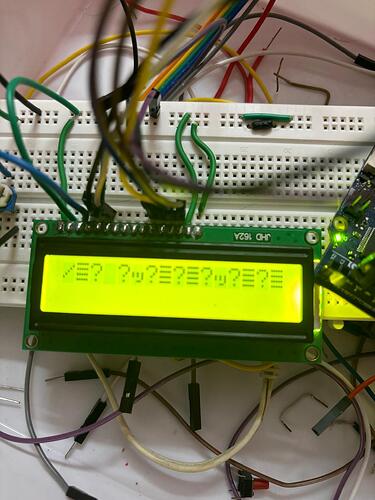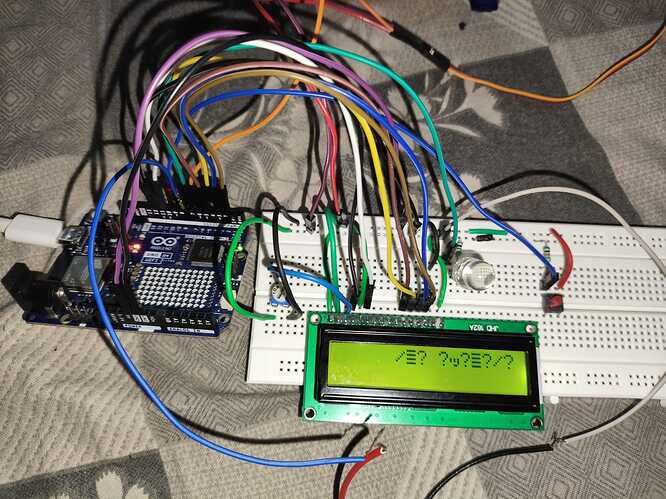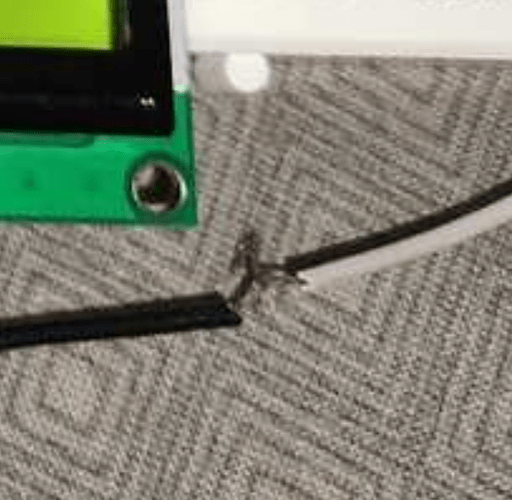#include <Servo.h>
#include <LiquidCrystal.h>
#include <RTC.h>
#include <WiFiS3.h>
#include <ESP_Mail_Client.h>
#define WIFI_SSID "" // CHANGE IT
#define WIFI_PASSWORD "" // CHANGE IT
// the sender email credentials
#define SENDER_EMAIL "umaakeeru@gmail.com" // CHANGE IT
#define SENDER_PASSWORD "mjxa mbis gvfd jpne" // CHANGE IT to your Google App password
#define RECIPIENT_EMAIL "umaakeeru@gmail.com" // CHANGE IT
#define SMTP_HOST "smtp.gmail.com"
#define SMTP_PORT 587
SMTPSession smtp;
Servo servo; // create servo object
// constant variables for pins
const int servoPin = 6;
const int buttonPin = 9;
const int ledPin = 7;
const int buzzerPin = 8;
// other variables
int angle = 0;
int angleIncrement = 45; // default 45 degrees for 4 compartments, change for different number of compartments
int newAngle;
int buttonState;
int movementDelay = 50;
int debounceDelay = 1000;
int num=2;
// time variables
int year;
int month;
int day;
int hour;
int minutes;
int seconds;
bool fred=true;
// initialize the library by associating any needed LCD interface pin
// with the arduino pin number it is connected to
const int rs = 12, en = 11, d4 = 5, d5 = 4, d6 = 3, d7 = 2;
LiquidCrystal lcd(rs, en, d4, d5, d6, d7);
void setup(){ // setup code that only runs once
pinMode(buttonPin, INPUT); // set button pin as input
pinMode(ledPin,OUTPUT); // set LED pin as output
pinMode(buzzerPin,OUTPUT); // set buzzer pin as output
digitalWrite(ledPin,LOW); // make sure LED is off
digitalWrite(buzzerPin,LOW); // make sure buzzer is off
servo.attach(servoPin); // attach servo object to servoPin
servo.write(angle); // set servo to initial angle
Serial.begin(9600); // initialize serial for debugging
// set up the LCD's number of columns and rows:
lcd.begin(16, 2);
// initialize the RTC and set the current date and time
// you will need to manually adjust the time right before you upload the code
RTC.begin();
RTCTime startTime(28, Month::OCTOBER, 2024, 21, 05, 50, DayOfWeek::FRIDAY, SaveLight::SAVING_TIME_ACTIVE);
RTC.setTime(startTime);
}
void updateLCD(){ // function to update LCD screen
// get current time from the RTC
RTCTime currentTime;
RTC.getTime(currentTime);
// store current time variables
year = currentTime.getYear();
month = Month2int(currentTime.getMonth());
day = currentTime.getDayOfMonth();
hour = currentTime.getHour();
minutes = currentTime.getMinutes();
seconds = currentTime.getSeconds();
// set the cursor to column 0, line 1
// (note: line 1 is the second row, since counting begins with 0):
lcd.setCursor(0, 0);
// print month/day/year (rearrange for different date formats)
// add leading spaces if month or day are less than 10 to keep spacing consistent
// (always use 2 characters for month and day)
if(month<10){ // print extra space if month is less than 10
lcd.print(" ");
}
lcd.print(month); // print the month
lcd.print("/");
if(day<10){ // print extra space if the day is less than 10
lcd.print(" ");
}
lcd.print(day); // print the day
lcd.print("/");
lcd.print(year); // print the year
// print time in hh:mm:ss format
// add leading zeroes if minutes or seconds are less than ten to keep spacing consistent
lcd.setCursor(0, 1); // move cursor to second row
if(hour<10){ // print leading space if hour is less than 10
lcd.print(" ");
}
lcd.print(hour); // print the hour
lcd.print(":");
if(minutes<10){ // print leading zero if minute is less than 10
lcd.print("0");
}
lcd.print(minutes); // print the minute
lcd.print(":");
if(seconds<10){ // print leading zero if second is less than 10
lcd.print("0");
}
lcd.print(seconds); // print the second
}
void loop(){ // code that loops forever
updateLCD(); // display the current date and time on the screen (see function below)
buttonState = digitalRead(buttonPin); // read button state (you can edit the code to advance the servo when you press the button, useful for debugging)
Serial.println(angle); // print the servo angle
// detect certain times and rotate the servo mechanism ahead by one compartment.
// the example code rotates the servo once per minute when the seconds variable equals 0.
// change to detect different times of day, for example (hours == 9 && minutes == 0 && seconds == 0) would detect 9:00:00 AM
// use additional "else if" conditions to detect more than one time
if(seconds == 0){ // check for seconds = 0 (one minute intervals)
newAngle = angle + angleIncrement; // increase angle by increment
if (newAngle<=180){ // if the new angle is less than or equal to 180, increase angle
while(angle < newAngle){ // increase angle until it reaches the new angle
angle = angle + 1; // increase angle by 1
servo.write(angle); // move the servo
Serial.println(angle); // print the angle
delay(movementDelay); // delay to slow down movement
}
// flash LED and buzzer
flashLED(40,150); // flashLED(number of flashes, delay in milliseconds), see function below
}
else{ // if the new angle is greater than 180, reset angle to 0
while(angle>0){ // decrease angle until it reaches 0
angle = angle - 1; // decrease angle by 1
servo.write(angle); // move the servo
Serial.println(angle);// print the angle
delay(movementDelay); // delay to slow down movement
}
}
}
}
void flashLED(int numFlashes, int flashDelay){ // alarm function to flash LED and sound buzzer
lcd.clear(); // clear the LCD screen
lcd.setCursor(0, 0); // set cursor to top left
lcd.print("Take medicine!"); // display message
Serial.begin(9600);
WiFi.begin(WIFI_SSID, WIFI_PASSWORD);
for (int i = 0; i < numFlashes; i++) { // Loop to flash LED/buzzer
if (digitalRead(buttonPin) == LOW) { // Check if the button is pressed
digitalWrite(ledPin, LOW); // Turn LED off
digitalWrite(buzzerPin, LOW); // Turn buzzer off
fred = false;
// Wait until the button is released
// Resume without incrementing i (continue flashing)
} else {
// Flash the LED and buzzer
digitalWrite(ledPin, HIGH);
digitalWrite(buzzerPin, HIGH);
delay(flashDelay);
digitalWrite(ledPin, LOW);
digitalWrite(buzzerPin, LOW);
delay(flashDelay);
// Increment only when not paused
}
}
// wait for button press - the code will get stuck in this loop until you press the button
while(digitalRead(buttonPin) == LOW){
digitalWrite(ledPin,HIGH); // turn LED on
digitalWrite(buzzerPin,HIGH); // turn buzzer on
delay(flashDelay); // delay
digitalWrite(ledPin,LOW); // turn LED off
digitalWrite(buzzerPin,LOW); // turn buzzer off
delay(flashDelay)
};
delay(1000); // delay before clearing screen
lcd.clear(); // clear screen
}
Serial.print("Connecting to Wi-Fi");
while (WiFi.status() != WL_CONNECTED) {
Serial.print(".");
delay(300);
}
Serial.println();
Serial.print("Connected with IP: ");
Serial.println(WiFi.localIP());
Serial.println();
String subject = "Email Notification from Arduino";
String textMsg = "Hey take your medicine!!!!.\n";
textMsg += "Also don't forget to press the switch.\n ";
textMsg += "Have a nice day!"; // OR replace this value read from a sensor
// wait for button press - the code will get stuck in this loop until you press the button
};
void gmail_send(String subject, String textMsg) {
// set the network reconnection option
MailClient.networkReconnect(true);
smtp.debug(1);
smtp.callback(smtpCallback);
Session_Config config;
// set the session config
config.server.host_name = SMTP_HOST;
config.server.port = SMTP_PORT;
config.login.email = SENDER_EMAIL;
config.login.password = SENDER_PASSWORD;
config.login.user_domain = F("127.0.0.1");
config.time.ntp_server = F("pool.ntp.org,time.nist.gov");
config.time.gmt_offset = 3;
config.time.day_light_offset = 0;
// declare the message class
SMTP_Message message;
// set the message headers
message.sender.name = F("Arduino");
message.sender.email = SENDER_EMAIL;
message.subject = subject;
message.addRecipient(F("To Whom It May Concern"), RECIPIENT_EMAIL);
message.text.content = textMsg;
message.text.transfer_encoding = "base64";
message.text.charSet = F("utf-8");
message.priority = esp_mail_smtp_priority::esp_mail_smtp_priority_low;
// set the custom message header
message.addHeader(F("Message-ID: <abcde.fghij@gmail.com>"));
// connect to the server
if (!smtp.connect(&config)) {
Serial.println("Connection error: ");
Serial.print("- Status Code: ");
Serial.println(smtp.statusCode());
Serial.print("- Error Code: ");
Serial.println(smtp.errorCode());
Serial.print("- Reason: ");
Serial.println(smtp.errorReason().c_str());
return;
}
if (!smtp.isLoggedIn()) {
Serial.println("Not yet logged in.");
} else {
if (smtp.isAuthenticated())
Serial.println("Successfully logged in.");
else
Serial.println("Connected with no Auth.");
}
// start sending Email and close the session
if (!MailClient.sendMail(&smtp, &message)) {
Serial.println("Connection error: ");
Serial.print("- Status Code: ");
Serial.println(smtp.statusCode());
Serial.print("- Error Code: ");
Serial.println(smtp.errorCode());
Serial.print("- Reason: ");
Serial.println(smtp.errorReason().c_str());
}
}
// callback function to get the Email sending status
void smtpCallback(SMTP_Status status) {
// print the current status
Serial.println(status.info());
// print the sending result
if (status.success()) {
for (size_t i = 0; i < smtp.sendingResult.size(); i++) {
// get the result item
SMTP_Result result = smtp.sendingResult.getItem(i);
Serial.print("Status: ");
if (result.completed)
Serial.println("success");
else
Serial.println("failed");
Serial.print("Recipient: ");
Serial.println(result.recipients.c_str());
Serial.print("Subject: ");
Serial.println(result.subject.c_str());
}
Serial.println("----------------\n");
// free the memory
smtp.sendingResult.clear();
}
}
this is my code my lcd is not working for this i adjusted potentiometer and it doesn't work kindly help
this is the wiring i follow




